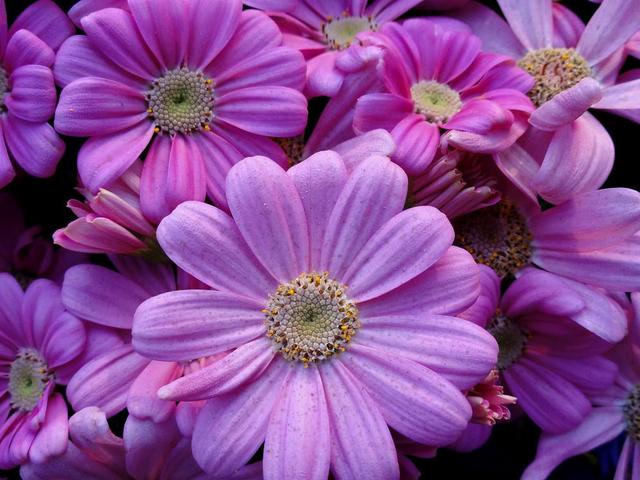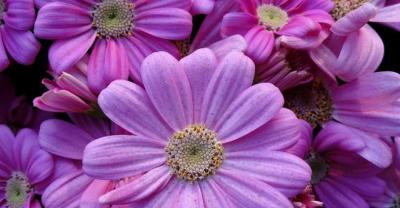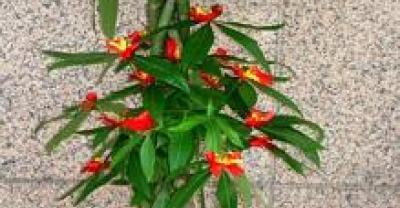This way, the melons can grow very luxuriantly
Melon's alias-cucumber flower, dry lotus, melon leaf lotus. Origin: Spain Canary Islands. Chrysanthemum leaves can be divided into four types: large flower type, star type, intermediate type and flower type. The color is gorgeous and rich, and it has high ornamental value. The following is a detailed breeding point.
1. Selection of soil: melons grow well on loose, fertile, well-drained sandy loam soil, and soil with pH value of 6.5~7.5 is more suitable for melons to grow.
2. Temperature: The optimum temperature for melon growth is 10~15℃. The temperature is too high, the plant is easy to grow, the internode elongates, affects the ornamental value; the temperature is too low, inhibits the plant growth, the flower becomes small, even suffers the freezing injury.
3. Light: ① Melon is a light-loving plant. During the growth period, it should be maintained in the sunny place with good light. It should be placed in the bright south, west and east windows for 4 hours every day to keep the color gorgeous and the plant healthy.
② In summer, melon seeds are placed in semi-shade to avoid direct sunlight, otherwise the leaves are easy to curl, dry and lack of vitality.
4. Cultivation: ① Sowing soil can be prepared by using moldy soil and fine sand in a ratio of 1:1. After the pot soil is soaked in water, the seeds are evenly spread on the soil, slightly covered with fine sand, and the thickness is appropriate to see no seeds.
② After sowing, cover the pot surface with glass or plastic film to keep warm and moist. Under the temperature condition of 20℃, it can sprout in 7~10 days in a cool place.
③ After seedling emergence, glass or plastic film can be removed for ventilation, and gradually moved to the sun.
④ About one month after emergence, when the seedlings grow 2~3 true leaves, they can be divided into seedlings, pour a thin liquid fertilizer, and transplant the seedlings into small flower pots with a diameter of 10 cm.
When the seedlings grow 5 to 6 true leaves, they can be planted in flying pots with a diameter of about 20 cm. On the basin, the basin floor should be slightly applied with long-term base fertilizer.
5. Watering: melon leaves are large and thin, water demand is large, but watering should not be too much, to the right amount, to keep the pot soil moist is appropriate. If water is scarce, the leaves will droop, and severe water shortage will cause the leaves to wilt.
6. Pruning: During the growth period of melon, the lateral buds sprouting from the axils of the base branches and leaves of the plant should be removed in time, and the upper axillary buds should be retained to reduce the consumption of nutrients and avoid excessive congestion of branches and leaves, so as to concentrate more nutrients for the growth of upper flowers, which is conducive to more flowers, larger and more vivid colors.
7. Fertilization: ① During the growth and development of melon, it is necessary to pour decomposed thin fertilizer solution every 7~10 days until the bud is observed, so that seedlings can grow vigorously and bloom luxuriantly. Thin fertilizer solution can be selected decomposed bean cake or peanut cake, rotten soybean, rotten peanut, diluted with water 10 times can be applied.
(2) Phosphorus and potassium fertilizer should be applied once or twice in flowering stage, and little or no nitrogen fertilizer should be applied to promote bud growth and inhibit leaf growth. Before flowering, it is not advisable to apply too much nitrogen fertilizer, control the amount of watering, and move the plants to the shady balcony with low temperature, because the growth environment temperature is too high, which easily leads to excessive growth of leaves and affects viewing.
8. Propagation: melon fly propagation multi-use seeding method, not easy to seed varieties available cutting propagation. From April to October, people can sow seeds in stages according to their own needs. If it is required to bloom before New Year's Day, it can be sown in early April; if it is required to bloom around the Spring Festival, it can be sown in mid-May; if it is required to bloom before the Spring Festival, it can be sown from October; if there is no requirement for flowering, it is appropriate to sow in April to May.
9. Disease and pest control: Melon often suffers from verticillium wilt, which is mainly caused by viral pathogens and is generally transmitted by leafhoppers. Infected plants are inhibited in inflorescence development, green in color, abnormal in development, and occasionally excessive in flower growth. To prevent and control the disease, appropriate potassium fertilizer can be given during the growth period of transplanted plants to enhance the disease resistance of plants and reduce the chance of virus infection; appropriate spraying of 0.5% potassium permanganate aqueous solution for disinfection can also play a preventive role; once infected plants are found, the diseased plants should be immediately removed and burned to prevent spread.

- Prev

Culture methods and precautions of Cymbidium the soil should not be too dry
Friends all know that Magnolia is a kind of high-grade flower plant. Their hometown is in Africa, and it is a very beautiful flowering plant. Now cultivate you.
- Next

Know how to breed peppermint and blow up the pot in minutes!
The smell of peppermint is indeed a very strange fragrance. People who like her love her very much. It's a must for hot pot, and people who don't like her don't feel it.
Related
- On the eggshell is a badge full of pride. British Poultry Egg Market and Consumer observation
- British study: 72% of Britons are willing to buy native eggs raised by insects
- Guidelines for friendly egg production revised the increase of space in chicken sheds can not be forced to change feathers and lay eggs.
- Risk of delay in customs clearance Australia suspends lobster exports to China
- Pig semen-the Vector of virus Transmission (4)
- Pig semen-the Vector of virus Transmission (3)
- Five common causes of difficult control of classical swine fever in clinic and their countermeasures
- Foot-and-mouth disease is the most effective way to prevent it!
- PED is the number one killer of piglets and has to be guarded against in autumn and winter.
- What is "yellow fat pig"? Have you ever heard the pig collector talk about "yellow fat pig"?

